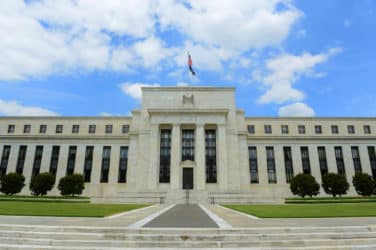The U.S. equity markets begin the week with a fresh outlook with Friday’s U.S. employment data out of the way and a potential return to normal trading patterns.
On Friday, U.S. April non-farm payrolls came in at 160,000 new jobs added, well under the market consensus forecast of 202,000. The dip was enough to send the stock markets into a tailspin after the release and eradicate most gains achieved for the week and in some cases, the year. The Nasdaq at one point dropped more than 10 percent from its highs and into correction territory. The S&P saw all of it gains this year erased on the weak data by 11:00 am.
The U.S. dollar weakened versus the yen and euro on the weak U.S. economic data, which in turn makes the outlook for the June FOMC meeting and its decision to move interest rates more difficult. Many economists were forecasting a hike, likely 25 bps, in benchmark rates before the employment figures. But now given the weak report and its soft portrayal of the U.S. economy, a hike in rates doesn’t appear as likely, at least until further data is released.
But that’s the good news.
Equities benefited from the uptick in volatility Friday and that is expected to continue into this week. Despite a light IPO calendar, traders welcome the immediate volatility and the trading opportunities it brings.
“While the IPO calendar remains light there is volatility-driven business that we’re doing,” said one trading desk head in New York. “People are trading, but in smaller sizes. As far as we can see, there is cash that needs to be put to work.”’
Another trader agreed, adding that the “Buy in May and go away” philosophy was in full effect as his clients were adding to positions now before the summer vacation season starts in earnest. Trading in the summer months is typically slower with traders historically not buying or selling.
However, some in the market are talking about a market correction. With volatility currently at high levels amid tepid earnings and growth, several market observers who spoke with Markets Media said that despite Friday’s uptick in volatility, the market could well slow down later in the week. Also, some are worried about weak economic growth overseas in Europe and Asia which can be a drag on U.S. stock volumes, which are often viewed as a bastion of safety for foreign investors and cash.
“I think that we’re at a top for trading volume and that volume from abroad, namely China, with its own weakening economy and pullback by its day traders will hurt our market,” one executive said.
U.S. equity volume has dropped off its peaks seen earlier this year in January and February – with daily trading volume averaging 7.1 billion shares a day currently. In January and February, trading volume was averaging 9.1 billion shares a day.
This Week’s Major U.S. Economic Indicators of Interest:
| Monday | Labor Conditions Index |
| Tuesday | Weekly Redbook Retail Sales Wholesale Trade |
| Wednesday | Weekly MBA Mortgage Applications Index Treasury Budget Statement |
| Thursday | Weekly Jobless Claims Import/Export Prices |
| Friday | Retail Sales Producer Price Index Business Inventories Consumer Sentiment |
Featured image by Rawpixel/Photodune





